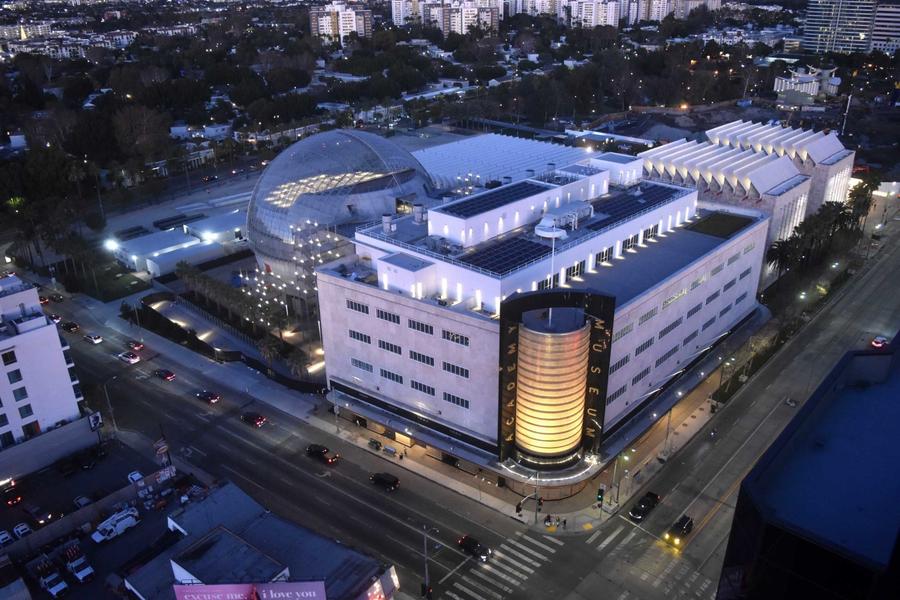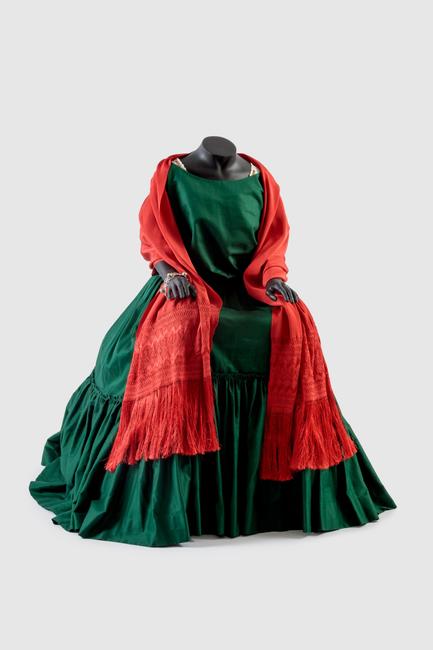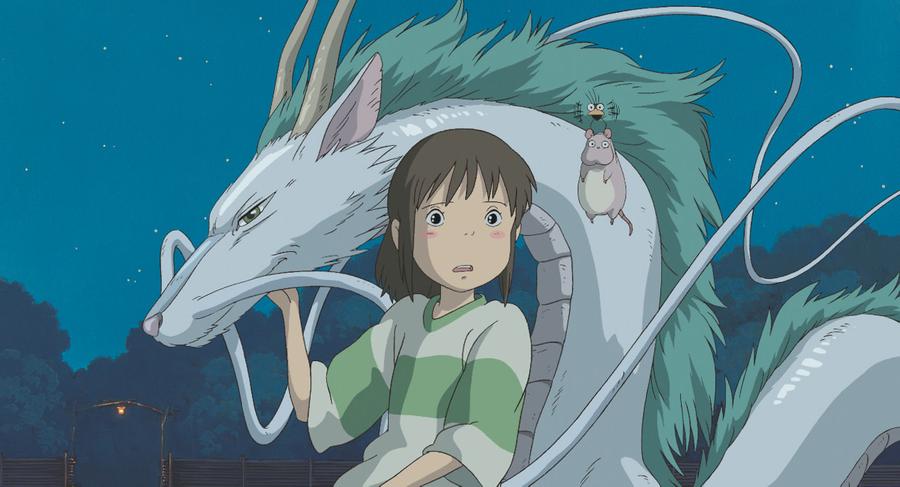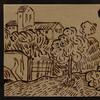Academy Museum of Motion Pictures Opens to the Public Next Week
- September 22, 2021 12:43


An experience of the arts, sciences, artists, and social impact of moviemaking, the Academy Museum of Motion Pictures will open its doors to the public on Thursday, September 30, 2021, following a dedication ceremony. Located in Los Angeles, the world capital of moviemaking, the new museum is the largest in North America devoted to exploring films and film culture and is the only such museum in Los Angeles.
Bill Kramer, Director and President of the Academy Museum, said, “We are living in changing and ever-evolving times, and now more than ever we need to come together to share our stories, learn from one another, and bond over being entertained and delighted. This is what movies do, and we are thrilled to be opening such a dynamic, diverse and welcoming institution devoted to this beloved artform."
The seven-story, 300,000-square-foot museum, which draws on the unique resources of the Academy of Motion Picture Arts and Sciences and is located in the heart of LA’s Miracle Mile, will open with the 30,000-square-foot core exhibition Stories of Cinema, offering celebratory, critical, and personal perspectives on the disciplines and impact of moviemaking, past and present.
The temporary exhibition Hayao Miyazaki, the first museum retrospective in North America of the work of the acclaimed filmmaker and Studio Ghibli will be on view along with The Path to Cinema: Highlights from the Richard Balzer Collection, with selections from the world’s foremost holdings of pre-cinematic optical toys and devices; Backdrop: An Invisible Art, a double-height installation that presents the painting of Mount Rushmore used in North by Northwest (USA, 1959); and and The Oscars® Experience, an immersive simulation that lets visitors imaginatively step onto the stage of the Dolby Theatre to accept an Academy Award®.
The Academy Museum’s inaugural temporary exhibition, Hayao Miyazaki, marks the first museum retrospective in North America dedicated to the acclaimed artist and his work. On view in the museum’s Marilyn and Jeffrey Katzenberg Gallery, the exhibition features approximately 400 objects from each of Miyazaki’s animated feature films, including My Neighbor Totoro (1988) and the Academy Award-winning Spirited Away (2001). Visitors will travel through the filmmaker’s six-decade career via a dynamic presentation of original imageboards, character designs, storyboards, layouts, backgrounds, posters, and cels, including pieces on public view outside of Japan for the first time, as well as large-scale projections of film clips and immersive environments.


Thematically organized in seven sections, the exhibition is designed as a journey. To enter, visitors follow four-year-old Mei, a character from My Neighbor Totoro, into the Tree Tunnel gallery, a transitional space that leads into Miyazaki’s enchanted worlds. Once inside, visitors will enter the Creating Characters gallery and meet Miyazaki’s protagonists―many of them female―and explore how they were developed from concept to creation. Visitors will then learn more about Miyazaki’s early works as an animator in the Making Of gallery, in addition to his long-term collaboration with the late Isao Takahata, with whom he founded Studio Ghibli. A special section on the Making of Nausicaä of the Valley of the Wind (1984) explores Miyazaki’s unique process to create films.

Deeper into the exhibition, the Creating Worlds gallery will capture the contrast between Miyazaki’s depictions of peaceful natural environments as well as the industrial settings dominated by labor and technology that are also often featured in his movies. Visitors can view imageboards and backgrounds that offer insight into Miyazaki’s imagination and explore his fascination with complex vertical structures, such as the famous bathhouse in Spirited Away, and the underwater world of Ponyo (2008), as well as Miyazaki’s interest in flying, as seen in Porco Rosso (1992) and The Wind Rises (2013). As a highlight of the exhibition, visitors can enjoy a moment of quiet contemplation in the Sky View installation, addressing another frequent motif in Miyazaki’s films: the desire to reflect and dream. Visitors then enter the Transformations gallery, a moving image driven experience which introduces some of the more challenging subject matters recurring in his films such as war and pollution, before entering the immersive Magical Forest with its Mother Tree installation. Standing at the threshold between dream and reality, colossal, mystical trees in many of Miyazaki’s films represent a connection or gateway to another world. In the forest, visitors will discover spirits appearing and disappearing and be able to read some of Miyazaki’s poetry. And finally, the exhibition concludes with Spirited Away’s Exit Portal through which visitors―accompanied by Chihiro’s footsteps—will leave the exhibition to return to the real world.

Accompanying Hayao Miyazaki will be a 288-page richly illustrated catalogue published by the Academy Museum and DelMonico Books and distributed worldwide by D.A.P. Artbook.







_-3100x100_c.jpg)













